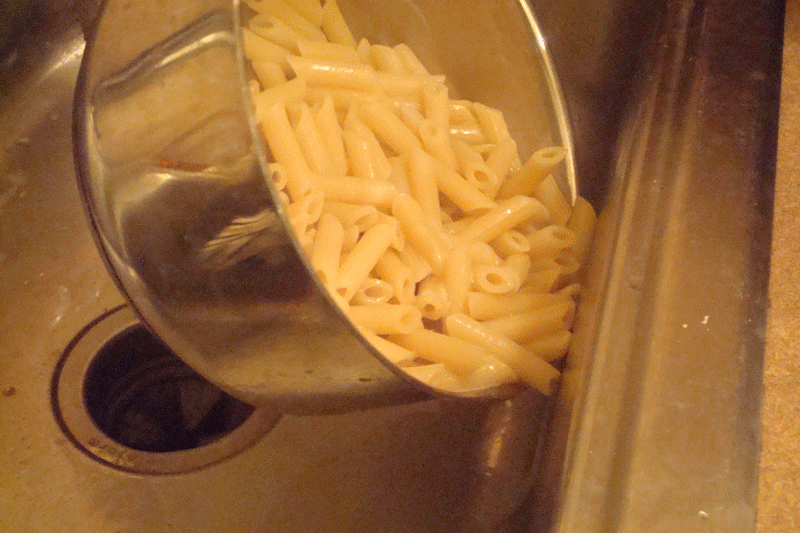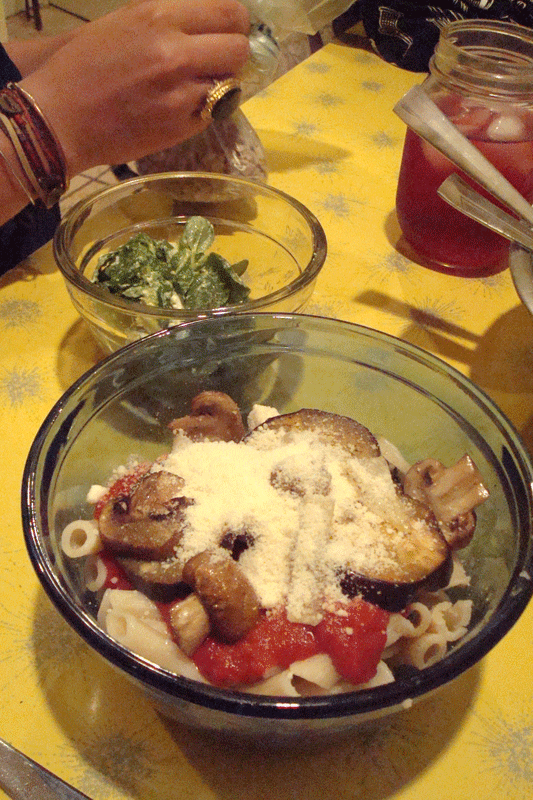Inevitably, there comes a time when a GF person will have to prepare food in a non-GF kitchen. While you can safely cook in other people’s kitchens that are not GF, you need to be aware of cross contamination issues and adapt your behavior and implements accordingly. Every GF person depending on their circumstances will have to set their own threshold of comfort with ingredients and environment. Very little gluten will make me sick so I tend to play it on the more cautious side because I’d rather be safe than glutened!
Usually the first thing that I do when I am in a foreign kitchen is wipe the counter tops and other surfaces down with a new sponge. I also give any dishware, utensils, and other implements a quick rinse or wash before I use them, just to be on the safe side. I also personally have a rule that if food touches a surface it’s “dead” and can’t be included with the meal, just in case. Usually I just make the non-GF person eat the morsel so it doesn’t go to waste!
In general, when cooking and eating a meal with someone who is not used to being GF I like to go grocery shopping with them because label reading is difficult for the untrained eye as there is no end to contingencies and exceptions.
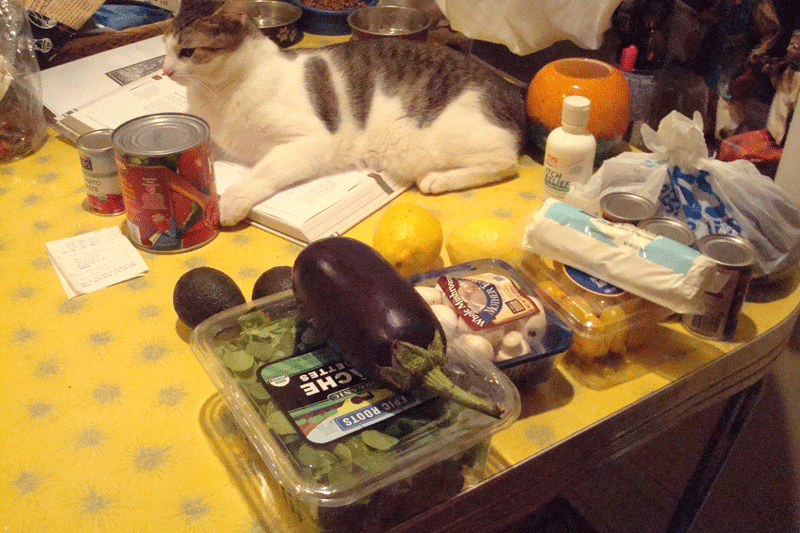 The major surfaces you have to watch out for are any that are porous. This includes wood, teflon, and cast iron. Non-porous surfaces include glazed ceramic, glass, and stainless steel. I also tend to use plates or plastic cutting boards to prepare my ingredients. For surfaces I am unsure about or cannot clean thoroughly enough, I use aluminum foil to cover the cooking surface.
The major surfaces you have to watch out for are any that are porous. This includes wood, teflon, and cast iron. Non-porous surfaces include glazed ceramic, glass, and stainless steel. I also tend to use plates or plastic cutting boards to prepare my ingredients. For surfaces I am unsure about or cannot clean thoroughly enough, I use aluminum foil to cover the cooking surface.
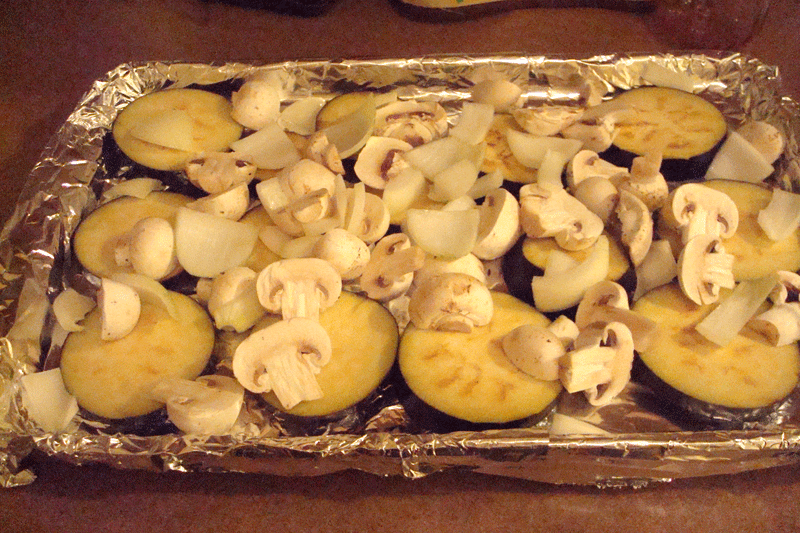
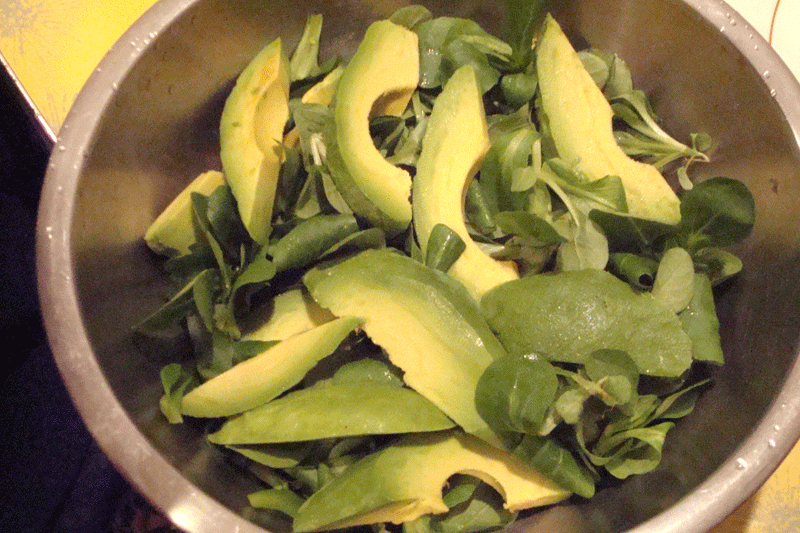 When making pasta, instead of using a potentially contaminated colendar (colendars can’t ever really be cleaned thoroughly enough to be definitively GF) I prefer to use the side of the sink to drain the pasta. Sinks are usually ceramic or stainless steel, both non-porous surfaces, that can be cleaned fairly easily. Another possibility for draining pasta is to use the lid to drain the water.
When making pasta, instead of using a potentially contaminated colendar (colendars can’t ever really be cleaned thoroughly enough to be definitively GF) I prefer to use the side of the sink to drain the pasta. Sinks are usually ceramic or stainless steel, both non-porous surfaces, that can be cleaned fairly easily. Another possibility for draining pasta is to use the lid to drain the water.
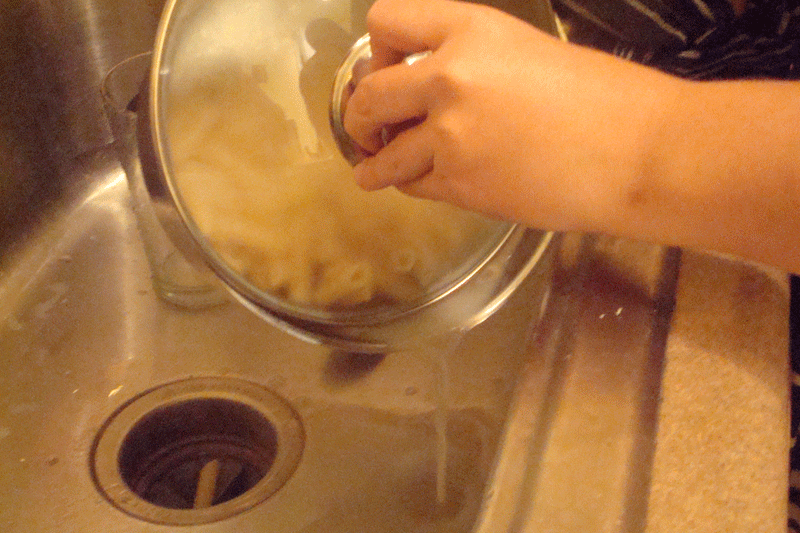 For kitchens other than your own that you cook in frequently, I suggest stashing some GF serving and cooking utensils, a cutting board, and maybe a colander The best part about cooking in another person’s non-GF kitchen is the collaborative process and helping them become more comfortable with GF cooking (let alone the delicious resulting meal)!
For kitchens other than your own that you cook in frequently, I suggest stashing some GF serving and cooking utensils, a cutting board, and maybe a colander The best part about cooking in another person’s non-GF kitchen is the collaborative process and helping them become more comfortable with GF cooking (let alone the delicious resulting meal)!
[addtoany] Yum

